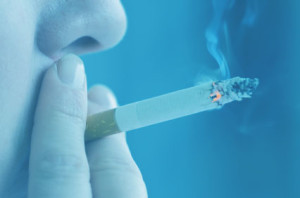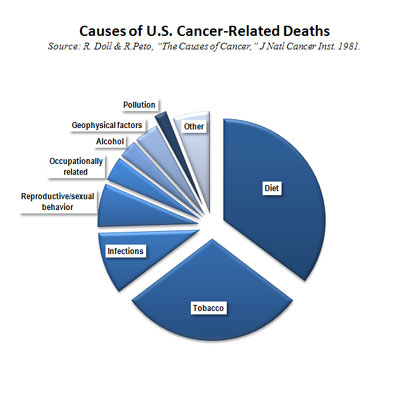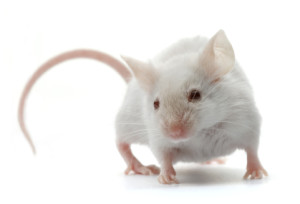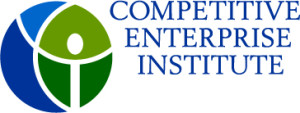 Environmental activists have long claimed that man-made chemicals are causing rampant cancer rates that could be addressed only by government regulation. Accordingly, lawmakers have passed laws directing government agencies to study environmental causes of cancer, estimate the number of lives allegedly lost, and devise regulations to reduce death rates. However, lawmakers should be aware of some key problems with how this system has worked in practice. First, the claim that chemical pollution is a major cancer cause is wrong. Second, agencies have relied on faulty scientific methods that grossly overestimate potential cancer deaths from chemicals and potential lives saved by regulation. As a result, regulatory policy tends to divert billions of dollars from other life-saving uses or from other efforts to improve quality of life to pay for unproductive regulations.
Environmental activists have long claimed that man-made chemicals are causing rampant cancer rates that could be addressed only by government regulation. Accordingly, lawmakers have passed laws directing government agencies to study environmental causes of cancer, estimate the number of lives allegedly lost, and devise regulations to reduce death rates. However, lawmakers should be aware of some key problems with how this system has worked in practice. First, the claim that chemical pollution is a major cancer cause is wrong. Second, agencies have relied on faulty scientific methods that grossly overestimate potential cancer deaths from chemicals and potential lives saved by regulation. As a result, regulatory policy tends to divert billions of dollars from other life-saving uses or from other efforts to improve quality of life to pay for unproductive regulations. 
In their landmark 1981 study of the issue, Richard Doll and Richard Peto set out to determine the causes of preventable cancer in the United States.(1) According to Doll and Peto, pollution accounts for 2 percent of all cancer cases, and geophysical factors account for another 3 percent (see chart). They do note that 80 percent to 90 percent of cancers are caused by “environmental factors.”Although activists often trump this figure as evidence that industrial society is causing cancer, Doll and Peto explained that environmental factors are simply factors other than genetics—not pollution alone. Environmental factors include smoking, diet, occupational exposure to chemicals, and geophysical factors. Geophysical factors include naturally occurring radiation, man-made radiation, medical drugs and medical radiation, and pollution. Tobacco use accounts for about 30 percent of all annual cancer deaths. Dietary choices account for 35 percent of annual cancer deaths.
Bruce Ames and Lois Swirsky Gold have come to similar conclusions, noting that smoking causes about a third of all cancers.(2) They underline the importance of diet by pointing out that the quarter of the population eating the fewest fruits and vegetables had double the cancer incidence than those eating the most. It may be that those who eat more fruits and vegetables tend to carry less fat on their bodies, which reduces cancer risk. Finally, they conclude: “There is no convincing evidence that synthetic chemical pollutants are important as a cause of human cancer.”(3)
The Dose Equals the Poison
Before government officials, both domestic and international, advocate or issue regulations, they need to justify the regulations on the basis of public health benefits. Accordingly, regulators and scientists at international organizations have developed various tests to assess risks. Although those tests have a tremendous effect on which chemicals are chosen to be regulated and to what degree, there are serious problems with the methodologies and the claims that researchers make about their findings.
During much of history, scientists contended, “the dose makes the poison.” Indeed, at small levels, substances can be helpful or benign, but at high levels, they can sicken or kill. But in the later part of the 20th century, regulators, many in the environmental community, and a few scientists abandoned that idea. They contended that many chemicals can have adverse effects at any level and that risks increase linearly with any dose above zero. On the basis of those assumptions, regulatory policy around the world has focused on ways to regulate chemicals to reduce exposure to as close to zero as possible. But many scientists question whether such linearity even exists. They contend that the old way of thinking was correct: many chemicals are safe under a given threshold or exposure level, with each chemical having its own threshold:
- Scientist Philip Abelson notes that the “error in this approach is becoming increasingly apparent through experiments that produce data that do not fit the linear model.” Indeed, he argues, “Pharmacologists have long stated that it is the dose that makes the poison.”(4)
- Others note that the low-dose linearity model ignores the fact that the human body may create defense mechanisms against chemicals when we are exposed to them at low doses, which means low-level exposures might help us fight off cancer and other illnesses. Scientist Jay Lehr notes that studies have found cases in which people exposed to low-levels of radiation actually experienced less incidence of leukemia than the general population, whereas highly exposed individuals experienced elevated rates of leukemia.(5)
- Another study found that increasing levels of low-level radon exposure are linked to decreasing cancer rates.(6)
- Increasingly, the idea that all chemicals are unsafe at any level is losing credibility.(7) In fact, the U.S. Environmental Protection Agency (EPA) proposed a rule that would have applied threshold assumptions in 1998. When the EPA reversed its position, a federal court vacated the rule because the EPA did not use the best peer-reviewed science as required by the Safe Drinking Water Act.(8)
Mice, Men, and Carcinogens
When environmentalists and government agencies label chemicals as carcinogens, they often point to rodent tests. However, the tests have been proven seriously flawed. They entail administering massive amounts of chemicals to rodents bred to be highly susceptible to cancer. Then researchers extrapolate the possible effects of such chemicals on humans, who may be exposed to small amounts of the same chemical over their lifetimes.
First, we should ask, “Are the impacts on rodents relevant to humans?” Doll and Peto note that some chemicals found to be carcinogenic in humans have not produced cancerous tumors in rodent experiments. In fact, for many years, cigarette smoke failed to produce malignant tumors in laboratory animals even though tobacco is perhaps the leading cause of cancer in the United States. These discordant effects of chemicals in animals and humans underline the difficulty of relying on animal results to estimate human risks.(9)
Second, researchers question whether the extremely high doses administered in the lab are relevant even to low-level exposures in the real world. Ames and Gold demonstrate why we need not be concerned about low-level exposure to “rodent carcinogens.”(10) Ames and Gold found that such chemicals pose no more risk than that posed by the many natural, unregulated substances that are common and accepted parts of a healthy diet:
- Although 212 of 350 of the synthetic chemicals examined by various agencies were found to be carcinogenic at the massive doses given to rodents, 37 out of 77 of the natural substances tested were also found carcinogenic in rodent studies employing the same methodology.(11)
- We safely consume thousands of natural chemicals every day at much higher levels than chemicals that have been labeled carcinogens because they caused cancer when administered in massive doses to rodents. For example, humans consume thousands of natural pesticides, which plants naturally produce as a biological defense mechanism.(12)
- Ames and Gold estimate that 99.99 percent (by weight) of the pesticides humans consume are natural pesticides.(13)
- The average intake of natural carcinogens found in plant foods is about 1,500 milligrams per person each day, while the average intake of human-made pesticides is 0.09 milligrams per day.(14)
- The commonness of exposures to chemicals is demonstrated by the identification of 826 volatile chemicals in roasted coffee. Although only 21 of those chemicals have been put through laboratory risk assessments, all but 5 were found to be carcinogenic in laboratory rat tests. A cup of coffee contains at least 10 milligrams of “carcinogenic” chemicals.(15)
- Carcinogens that cause cancer in rodent studies exist in apples, bananas, carrots, celery, coffee, lettuce, orange juice, peas, potatoes, and tomatoes at levels thousands of times greater than exposures found in drinking water.(16)
There is neither convincing evidence nor solid biological theory to support the contention that low-level, environmental exposure to natural or human-made chemicals is a significant cause of human cancers. Regulation of environmental exposures to chemicals can be expected to have no discernible effect on human health. The open question is how much money and effort are to be spent on those efforts and how many lives will be lost as regulation impedes life-saving technology.
What about Cancer Clusters?
In recent years, Hollywood produced two major motion pictures—A Civil Action and Erin Brockovich—on the alleged effects of chemicals on various communities. In both cases, tort lawyers claimed that drinking water contaminated by industrial facilities caused health-related problems in nearby areas.
Such cases raise public awareness about cancer clusters—geographic areas where cancer rates exceed (or appear to exceed) that of the general population. But despite the ability of trial lawyers to win such cases, it is nearly impossible to pin down the causes of such clusters. In 1990, the Centers for Disease Control and Prevention reported on 22 years of studies that covered clusters in 29 states and 5 foreign countries. They could not establish a clear cause for any cluster.(17)
Part of the problem is that many clusters occur by mere chance. Raymond R. Neutra of the California Department of Health Services finds that we can expect 4,930 such random cancer clusters to exist in any given decade in United States.(18) Cancer cluster surveillance systems also mistakenly focus on low-level exposure to chemicals in the environment when such risks may be impossible to detect.
How Many Cancers Can EPA Regulate Away?
Some of the EPA’s proposed regulations promise to save thousands from dying of cancer. When the promises of all of the hundreds of proposed regulations are added together, the lives claimed to be saved likely would total in the millions. But compared with the actual number of deaths and likely causes, do those claims hold water?
Scientist Michael Gough demonstrates that we should consider such EPA claims as suspect.(19) In 1990, Gough analyzed the findings of the landmark Doll and Peto study on the causes of cancer along with cancer risks estimated in EPA’s report Unfinished Business.(20) Gough came to conclusions similar to those of Doll and Peto. He noted that between 2 percent and 3 percent of all cancers could be associated with environmental pollution. Determining such numbers helps us understand exactly what the EPA can expect to accomplish when regulating pollutants for the purposes of reducing cancer. Gough notes that the EPA action could address only a very small percentage of cancers: If the EPA risk assessment techniques were accurate and all identified carcinogens amenable to EPA regulations were completely controlled about 6,400 cancer deaths annually (about 1.3 percent of the annual total of 485,000 cancer deaths when Gough did the analysis) would be prevented. When cancer risks are estimated using a method like that employed by the Food and Drug Administration, the number of cancers that can be regulated is smaller—about 1,400 (about 0.25 percent).(21)
Endnotes:
1. Richard Doll and Richard Peto, “The Causes of Cancer: Quantitative Estimates of Avoidable Risks of Cancer in the United States Today,” Journal of the National Cancer Institute 66, no. 6 (1981): 1191–308.
2. Bruce N. Ames and Lois Swirsky Gold, “Environmental Pollution, Pesticides, and the Prevention of Cancer: Misconceptions,” FASEB Journal 11, no. 13 (1997): 1041–52, http://socrates.berkeley.edu/mutagen// AmesGold.pdf.
3. Ibid., 1041.
4. Philip Abelson, “Radon Today: The Role of Flimflam in Public Policy,” Regulation 14, no. 4 (1991): 97.
5. Jay Lehr, “Good News about Radon: The Linear Nonthreshold Model Is Wrong,” Environmental Education Enterprises, Ostrander, OH, May 1996.
6. Bernard L. Cohen, “Test of the Linear–No Threshold Theory of Radiation Carcinogenesis for Inhaled Radon Decay Products,” Health Physics 68, no. 2 (1995): 157–74.
7. For a discussion of thresholds, see James D. Wilson, “Thresholds for Carcinogens: A Review of the Relevant Science and Its Implications for Regulatory Policy,” in What Risk? ed. Roger Bate (Boston: Butterworth Heinemann, 1997), 3–36.
8. See Angela Logomasini “Safe Drinking Water Overview,” in The Environmental Source (Washington, D.C.: Competitive Enterprise Institute, 2008).
9. Doll and Peto, “The Causes of Cancer,” 1192–308.
10. Bruce N. Ames and Lois Swirsky Gold, “Too Many Rodent Carcinogens: Mitogenesis Increases Mutagenesis,” Science 249, no. 4976 (August 31, 1990): 1487.
11. Ibid.
12. Ibid.
13. Ibid.
14. Ibid.
15. Ibid.
16. See Appendix A of National Research Council, Committee on Comparative Toxicology of Naturally Occurring Carcinogens, Carcinogens and Anticarcinogens in the Human Diet: A Comparison of Naturally Occurring and Synthetic Substances (Washington DC: National Academies Press, 1996).
17. Glyn G. Caldwell, “Twenty-Two Years of Cancer Cluster Investigations at the Centers for Disease Control,” American Journal of Epidemiology 132, suppl. 1 (1999): S43–47.
18. Lori M. Kase, “Why Community Cancer Clusters Are Often Ignored,” Scientific American 275, no. 3 (1996): 85–86.
19. Michael Gough, “How Much Cancer Can EPA Regulate Away?” Risk Analysis 10, no. 1 (1990): 1–6. See also Michael Gough, “Estimating Cancer Mortality,” Environmental Science and Technology 23, no. 8, (1989): 925–30. 20. EPA, Unfinished Business: A Comparative Assessment of Environmental Problems—Overview Report (Washington, DC: EPA, 1987).
21. Gough, “How Much Cancer Can EPA Regulate Away?” See also Gough, “Estimating Cancer Mortality.”
Last updated: February 6, 2012. The original text for this article was drawn from Angela Logomasini, “True Causes of Cancer,” in Environmental Source, eds., Angela Logomasini Ph.D. and David Riggs, Ph.D., published by Competitive Enterprise Institute, 2002 (1st ed.), 2008 (2nd ed.).


[…] https://safechemicalpolicy.org/cancer-risk-factors/ […]